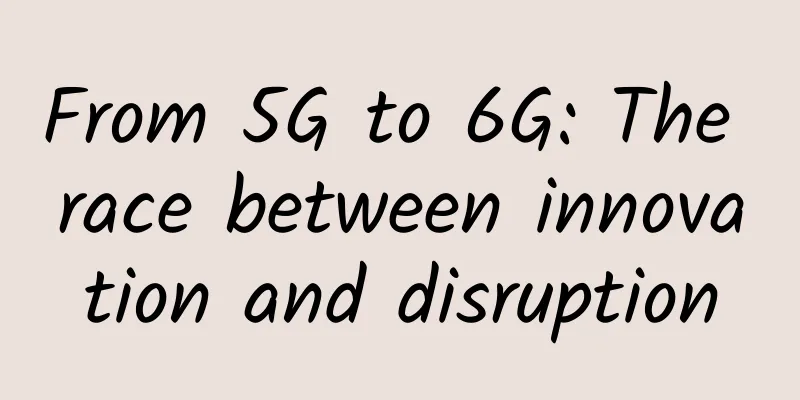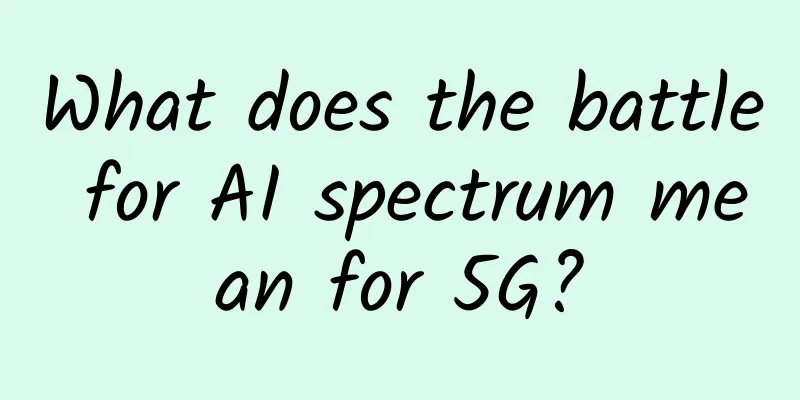From 5G to 6G: The race between innovation and disruption

|
McKinsey's 2022 Technology Trends Outlook shows that 5G, 6G, low-orbit satellite communications and other advanced connectivity technologies, with an investment of $166 billion in 2021, are driving growth and productivity across industries. The technology has a high adoption rate compared to other new technologies such as artificial intelligence (AI) and mobility (sustainable transportation development). In a report shared with TechRepublic, Market Research and Future mentioned that the outbreak of the new coronavirus was an important catalyst for the global application of 5G technology. Market Research Future said that 5G technology can achieve industry transformation faster with greater capacity and low latency, and it will affect the development of transportation, banking, traffic control, telemedicine, agriculture, digital logistics and other fields. New technologies such as artificial intelligence, machine learning, the Industrial Internet of Things (IIoT), new smart cars, and virtual reality applications in the metaverse also require faster download times and more real-time data communications. 5G and 6G will solve these problems and better support the development of new technologies. Market Research Future explained that 5G base station deployment is not without challenges, among which the standardization of spectrum and the complexity of 5G network installation are particularly prominent. MIT Technology Review added that 6G technology will also face challenges, requiring cross-disciplinary innovation, new chips, new equipment and software. Technical challenges faced by 5G and 6GThe next generation of cellular mobile communication technology that provides higher spectral efficiency and high bandwidth has sparked debate. As McKinsey explains, many people still wonder whether 5G can completely replace 4G LTE networks and how widespread 5G will be. According to the Global Mobile Suppliers Association, as of May 2022, 493 operators in 150 countries are investing in 5G technology, and another 200 companies have technology that can be used for 5G. By the end of 2020, the number of newly released 5G smartphones increased by 164%, and the number of 5G devices entering the procurement catalog increased by 60%. But while new consumer electronics have been rapidly equipped with 5G capabilities, industrial and commercial equipment have not. “Switching from 4G LTE networks to 5G private networks will not be cost-effective for all players; this will depend on the player’s technology ambitions and planned usage,” McKinsey said. Market Research Future says that $61.4 billion is driving this highly competitive market, which is expected to reach $689.6 billion by 2027. It must be mentioned here that the inadequacy of infrastructure, equipment, and software has always been a constraint on the rapid development of this market. MIT Technology Review mentioned that the challenges faced by 6G and 5G are generally similar, but one difference is that 6G engineers must work on infrastructure, equipment, and software construction to build the next-generation communication system. 6G connectivity cannot be achieved by simply expanding or updating existing technologies. MIT Technology Review further added that 6G uses a more complex active antenna system (the active antenna integrates the receiving antenna module, low-noise amplifier module, and power supply module, and is powered by a fixed low-voltage regulated power supply). The system further integrates other radio access technologies such as WLAN (wireless local area network), Bluetooth, UWB (ultra-wideband) and satellite communications. Putting all of this technology into a smartphone will therefore require rethinking and recreating components such as chips and radio transceivers. “This will require extremely creative electrical and computer engineering, as well as disruptive industrial engineering and energy management.” New 6G chips will be critical to improving computing power. Low latency — the ability to process large amounts of data with minimal delay — is already a challenge for 5G and will be even more challenging for 6G technology. Low latency is essential for interactive data, real-time data and applications, virtual environments, and digital twins. These are also necessary conditions for the development of artificial intelligence, the metaverse, and industry. And by using nearby devices to generate signals on a three-dimensional network, the latency of 6G can be reduced. To address these issues, developments in new semiconductor materials, smart surfaces, artificial intelligence, and digital twin technologies are being used to test concepts, develop prototypes, and manage and enhance networks. McKinsey stressed that 5G has proven that only a few telecom companies can get a good return on investment (ROI) from 5G. Therefore, capital expenditure and maintenance costs will also be the focus of enterprises and industries. In addition, the development of new technologies and networks requires a lot of funds, which is another challenge. Driving Connectivity: Disrupting IndustryMichelin uses new connectivity technologies for real-time inventory management; Bosch equipped their first factory with 5G for automation, connecting hundreds of endpoints and synchronizing robots with factory workers. These are just some of the examples McKinsey gives of how advanced connectivity is disrupting industries. Connectivity is expected to increase the annual rate of data creation by 25% and connect 51.9 billion devices by 2025, with an impact on global GDP exceeding $2 trillion. In addition, 5G and 6G are expected to narrow the digital divide and connect hundreds of millions of people for the first time. In the automotive and assembly sectors, 5G and 6G technologies are used to enhance maintenance and navigation, collision avoidance, and to power driverless cars. Medical devices and sensors connected to low-latency networks will improve the level of treatment and detection of patients through real-time data, which will have a significant impact on the treatment of patients with chronic diseases that require constant monitoring. Aerospace and defense are leveraging 5G to increase power and performance, while retail is using it to optimize inventory management, supply chain collaboration, and payment processes while creating metaverse experiences with the technology. The construction industry is using 3D modeling and applying high-speed digital twin technology, while the mining and natural resources industries are moving towards smart exploration and development by digitalizing practices and automating operations. Leaders in nearly every industry are considering adopting new connectivity technologies. McKinsey said they should view advanced connectivity as a key enabler of change. From digital transformation, to improving efficiency through automation, to enabling the popularization of high-quality connectivity technologies such as cloud computing and the Internet of Things, connectivity will continue to improve the way people work and live. |
>>: Why is the 400-MHz spectrum ideal for critical communications?
Recommend
DogYun Hong Kong MG Data Center BGP Line Classic Cloud Server Simple Test
The tribe has shared information about different ...
Tell you the real strength of the four major communication operators' 5G
Recently, our country has determined the 2020 &qu...
edgeNAT September Promotion: 20% off for monthly VPS and 30% off for annual VPS starting from 48 yuan/month, in the US/Hong Kong/Korea data centers
edgeNAT has launched a promotional event for the ...
Ruishu Information won the 2021 Outstanding Contribution Award for New Technology Application Innovation in the Financial Industry
On December 29, the results of the "2021 12t...
ProfitServer: 50% off VPS in Hong Kong/Singapore/Russia/Spain/Netherlands/Germany, starting from $2.88 per month for unlimited traffic
ProfitServer recently offered a 50% discount on s...
Introduction to the complete 5G system
5G will soon be here, and it will be more than ju...
5G makes online and offline retail interesting again
5G can bring technology and innovation into the e...
NexusBytes: $4/month KVM-1GB/15GB/250GB/Japan data center
NexusBytes describes itself as a one-person compa...
RepriseHosting: $28.54/month-L5640/16G memory/240G SSD+8TB HDD/1Gbps bandwidth/Seattle data center
RepriseHosting recently launched a limited-editio...
WiFi, Bluetooth, NFC, three major technologies covered in one article!
Wi-Fi, Bluetooth, NFC, I believe everyone is fami...
Why SD-WAN is the best way to enable digital business
In a survey of mid-market enterprises, IDC found ...
On the first day after Double Eleven, I heard that programmers all went here to "carnival"...
November 12, 2017, 2:00 p.m. The autumn is crisp,...
UUUVPS newly launched Los Angeles AS9929 line VPS with 15% discount, native IP monthly payment starts from 33 yuan
UUUVPS (Sanyou Cloud) has newly launched the AS99...
10 Ways to Use AI for Web Design
【51CTO.com Quick Translation】 Web design is const...









